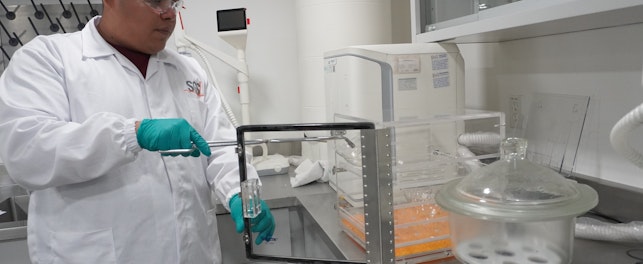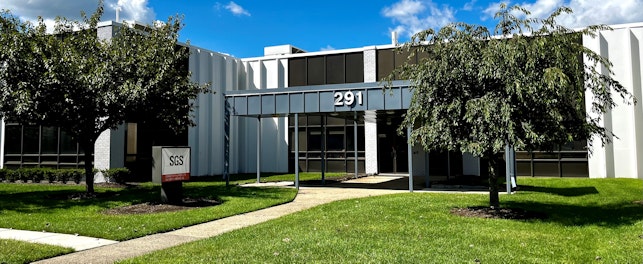The impact of a rapidly growing fashion industry on the planet is causing concern for consumers, governments and businesses. What can leather and footwear manufacturers do to reduce their environmental footprint?
Footprints and sustainability
Sustainability is now a key market demand. More and more consumers actively look for evidence of sustainability when making purchasing decisions, and a growing percentage are indicating a willingness to pay more when they find goods that conform to their environmental wishes. 1
Having a true understanding of a product’s environmental impact is now a critical aspect of any responsible company’s business practices. Two widely used methodologies for calculating a product’s environmental performance are Product Carbon Footprint (PCF) and Product Environmental Footprint (PEF).
The PCF method quantifies greenhouse gas (GHG) emissions across all stages of a product’s life cycle – from raw material extraction to manufacture, transportation, distribution, use and disposal. This can be enormous. For example, a life cycle assessment conducted by MIT on one pair of sneakers found it generated 13.6 kg of GHG emissions, which is equivalent to keeping a 100-watt light bulb on for a week. 2
The PEF method offers a broader analysis of environmental impact. It goes beyond a focus on climate change to include more complex mid-point and/or end-point impacts, such as the level of environmental impact during resource extraction, water consumption and eutrophication. Users of the PEF method gain a comprehensive understanding of a product’s overall environmental impact, allowing them to pinpoint precise areas for improvement.
The European Commission advocates PEF in its efforts to develop a harmonized set of rules for measuring environmental performance and quantifying environmental impacts. 3In 2018, the leather industry was selected to join the pilot phase of the initiative and the relevant category rule is approved. Still under development, it is confirmed leather and footwear will be included under the apparel and footwear industry category rules.
From deforestation law to green claims
The European Union (EU) has been particularly active in recent years in regard to environmental protection policies and actions that could impact the fashion industry. A new EU regulation on deforestation-free supply chains was adopted in June 2023. 4 This requires the analysis of deforestation factors in supply chains to avoid risk and potentially calls for the completion of an environmental footprint assessment.
The leather and footwear industries will also be affected by proposals relating to ‘green’ claims and future labeling rules in the EU.5 These would require companies to disclose credible environmental information about their products using the PEF methodology, as the recommended method for assessing environmental impact, enabling consumers to make better informed purchasing decisions.
Moreover, French Anti-Waste for a Circular Economy law mandates all producers of waste generating products in France to showcase environmental qualities and characteristics of products, which could also give rise to the need for an additional PEF assessment. 6
For businesses operating in the footwear and leather industries, quantifying PCF/PEF is the first step towards reducing their product’s environmental impact and it helps them maintain a competitive edge.
Industry acts
Footwear and leather brands are proactively responding to the need for a sustainability transformation. For example, the non-profit Leather Working Group (LWG) launched a life cycle assessment (LCA) project in 2021 to help brands and retailers make science-based sourcing decisions that will progress their supply chain sustainability goals.7
However, true sustainability is about more than just the footprint and fashion brands are now adopting a variety of sustainability strategies to help them minimize all aspects of their environmental impact. This includes transitioning to renewable energy sources and increasing the use of environmentally preferred materials, such as recycled polyester and nylon, bio-based materials and certified organic or natural fibers. These strategies, validated by PCF and/or PEF methods, signify a genuine commitment to sustainability that is then reported in the company’s annual report.
SGS solution
We offer a comprehensive one-stop service relating to the product carbon and environmental footprint of leather and footwear products.
Sevice include:
- Training – interpret and understand how to calculate PCF and PEF
- Assessment – quantify PCF and PEF at each stage of a product’s life cycle (LCA)
- Verification – ensures PCF and PEF quantification reports are accurate, consistent and transparent
- Certification – demonstrate a reduction in emissions or a product’s carbon neutrality
Our tailored solutions ensure regulatory compliance and enable companies to enhance their image by identifying improvement opportunities. With an expert technical team, we are ready to assist manufacturers and brands in positioning their products responsibly in global markets.
Learn more about SGS Softlines and Accessories services.
Enjoyed this article?
Find more news and updates in our Consumer Compact newsletter >
Delivered direct to your inbox
Subscribe to Consumer Compact >
References
1 PwC’s June 2021 Global Consumer Insights Pulse Survey: The global consumer: Changed for good & Global Consumer Insights Pulse Survey June 2023 | PwC
2 Footwear’s (carbon) footprint
3 EUR-Lex - 32021H2279 - EN - EUR-Lex
5 Proposal for a Directive on green claims
6 New Environmental Labeling Decree in France
7 Environmental Impact - Leather Working Group
© SGS Société Générale de Surveillance SA.






